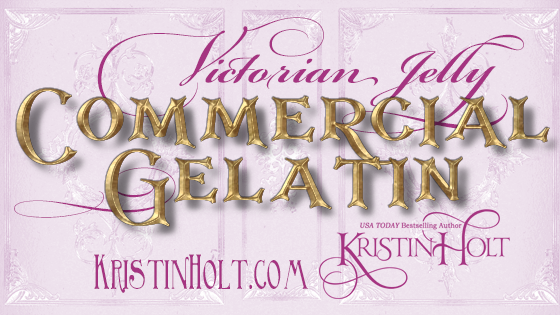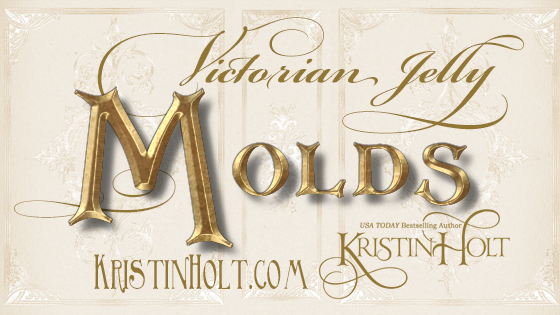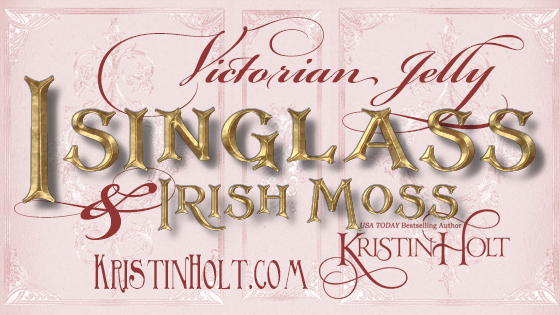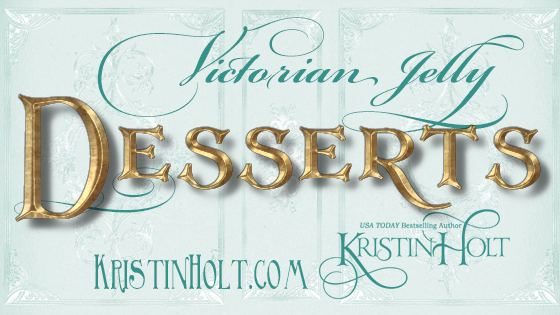
by Kristin Holt | May 28, 2022 | Articles
Credit goes to a Victorian-era inventor for out-of-a-box gelatin. What an amazing labor-saving invention! Until now, wives and daughters everywhere had been making gelatin out of pigs feet and a good deal of elbow grease.
How did nineteenth century scientists manage to capture the essence of gelatin and put it in a box? And how much did it cost?

by Kristin Holt | Jun 19, 2021 | Articles
Fancy jellies graced 19th century tables, molded in dishes made of tin, zinc, copper, and various ceramics. Photographs of antiques, together with vintage advertisements, illustrate this Victorian kitchen staple.

by Kristin Holt | Apr 12, 2021 | Articles
Victorian Jellies were all the rage throughout nineteenth-century America and Victoria’s British Isles.
Through mid-century, cooks relied on various gelling agents to set up their moulded creations. Two of those articles from the sea–isinglass and Irish moss–are illustrated by means of Victorian-era recipe books and newspaper advertisements.

by Kristin Holt | Apr 7, 2021 | Articles
Victorians (in every English-speaking nation) adored jellied desserts.
Vintage recipes from cookbooks and newspapers (from both sides of the Atlantic) illustrate how cooks made foods gel.

by Kristin Holt | Jun 5, 2019 | Articles
“Gingerbread” may immediately cause visions of cookie-and-candy houses dripping with icicles made of brittle white icing, but gingerbread’s Victorian history is so much more than that. Perhaps this broader history is why the National Day Calendar says today, June 5, is National Gingerbread Day.













